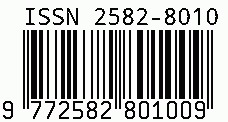
International Journal of Leading Research Publication
E-ISSN: 2582-8010
•
Impact Factor: 9.56
A Widely Indexed Open Access Peer Reviewed Multidisciplinary Bi-monthly Scholarly International Journal
Plagiarism is checked by the leading plagiarism checker
Call for Paper
Volume 6 Issue 4
April 2025
Indexing Partners



















Next-Gen Endpoint Security with AI: Challenges and Solutions
| Author(s) | Sandeep Phanireddy |
|---|---|
| Country | United States |
| Abstract | Endpoint security has become a critical piece of modern cyber defense, especially as companies adopt remote work models and handle sensitive data across vast networks. Traditional antivirus solutions are no longer enough to thwart sophisticated attacks, prompting the rise of AI-powered endpoint protection platforms. This paper explores the capabilities of Zscaler, Carbon Black, CrowdStrike, and open-source solutions in securing endpoints. We discuss how these tools incorporate machine learning, anomaly detection, and threat intelligence to block and contain breaches in real time. Key use cases and architectural considerations are presented, alongside formulas for detection thresholds and diagrams illustrating multi-layer protection. Finally, we address future challenges, such as adversarial AI and the expanding threat landscape, to highlight what lies ahead for endpoint security. |
| Keywords | Endpoint Security, Zscaler, Carbon Black, CrowdStrike, AI, Machine Learning, Zero Trust, Open Source, Future Challenges |
| Field | Engineering |
| Published In | Volume 3, Issue 12, December 2022 |
| Published On | 2022-12-06 |
| Cite This | Next-Gen Endpoint Security with AI: Challenges and Solutions - Sandeep Phanireddy - IJLRP Volume 3, Issue 12, December 2022. DOI 10.5281/zenodo.14960370 |
| DOI | https://doi.org/10.5281/zenodo.14960370 |
| Short DOI | https://doi.org/g86v5r |
Share this


CrossRef DOI is assigned to each research paper published in our journal.
IJLRP DOI prefix is
10.70528/IJLRP
Downloads
All research papers published on this website are licensed under Creative Commons Attribution-ShareAlike 4.0 International License, and all rights belong to their respective authors/researchers.

